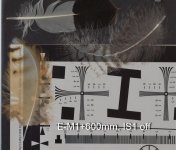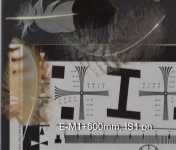"It works ok when activated for a short while to finalize manual focus in windy conditions where vibration is important."
"I focus using Digital TC or Peaking, without touching the shutter button so that IS is not working when focusing."
So, which is it? If you don't need IS to focus, why have half-press set to on?
With my 400, at half-press the IS is CLEARLY working. With 600 not at all.
The only way to find out if your IS is working is to do a systematic test. Take a test chart or a bit of newspaper, anything with lots of fine details, and pin it up about 15 meters away. Focus and lock the focuser. Do not lock down the scope! Then take at least 10 shots with IS on (with and without half-press) and then off, taking care to release the shutter the same way each time. Exposure should be maybe around 1/200, a range where IS should be a big help. Then compare.
I use an ISO 12233 chart and focus on one of the resolution crosses.
View attachment 486359 View attachment 486360
(You can see here the damage being done to my images with the IS on!)
Now, if there is vertical movement, the horizontal lines will be blurred, and vice verse. So you look and see where you can no longer see individual lines both on the vertical and horizontal arms of the cross, and average the two. Then add them all up and divide by the number of shots. This way you can easily see what is going on.
I did this with my E-30 and found that both on and off averaged out to about 8, but, where there was nothing above 9 and nothing below 7 with it on there were a few 10s and a few 6s with it off.
With the E-M1 I get a strong 9 average with it off, and about a 2-3 with it on.





